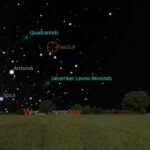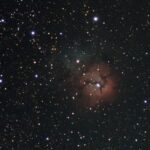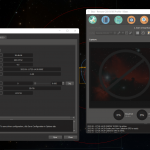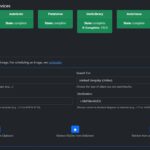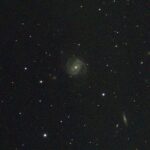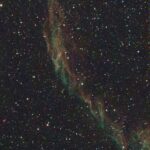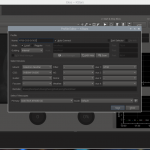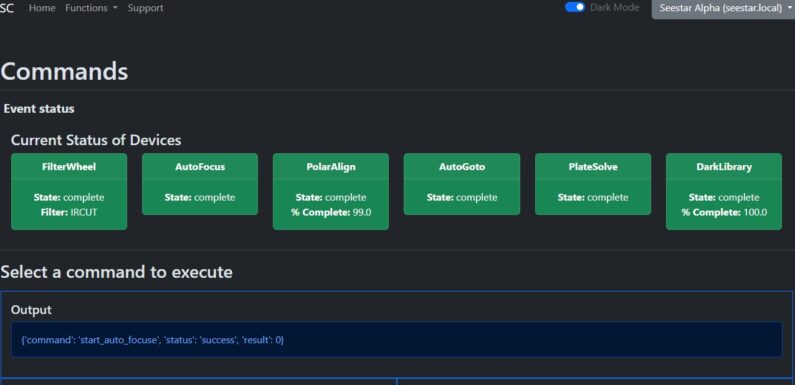
Very cold, very clear, and a very bright 80% waxing Moon high in the sky. Didn’t want to fight the Moon with any long exposure light gathering so I decided to do a bit of EAA observing with the SeeStar S50 to test out some of the capabilities of SeeStar Alp. I have the SeeStar Alp software running on a Raspberry Pi and am accessing the Simple SeeStar Controller from my Windows desktop using the Chrome Web Browser and Stellarium.
I set up the SeeStar on the CG5 tripod, powered it on, and connected with the SeeStar App to run the compass calibration and to level the SeeStar. Once I had the SeeStar calibrated and leveled I powered off the SeeStar and waited for dark.
When the Sun set I powered on the Raspberry Pi running SeeStar Alp. I powered on the SeeStar and waited for the voice to say “Ready to Connect.” After a couple minutes I was able to access Simple SeeStar Controller (SSC) and verified my SeeStar S50 was connected. I launched Stellarium and in the Telescope Control Plugin I connected to the SeeStar Alp INDI Server.
From the SSC menu access Functions -> Commands to run the Start-up sequence. The latitude and longitude location information is taken from the SSC Config. I executed the start up with just raise the arm checked. The start up initializes the SeeStar with the configuration information (including location lat/lon) and then opens the SeeStar arm.
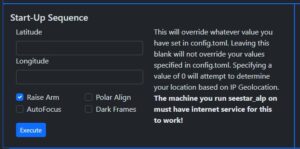
After the start-up completed I selected the bright star Capella in Stellarium and in Functions – > Goto I used the Retrieve RA/Dec from Stellarium to import Capella’s coordinates. After hitting Submit I changed to Functions -> Live and after a minute or 2 the bright star Capella was in the middle of the FOV.
I switched back to Functions -> Commands to manually run the Auto Focus, the Polar Alignment (Horizontal Calibration), and the Create Dark Library.
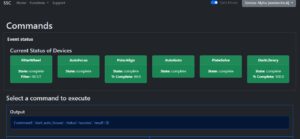
So far so good. Now onto the first target of the night NGC 457, the Owl Cluster, an open star cluster in Cassiopeia. In Stellarium I selected one on the named stars in NGC 457, v466 Cas, and in the SSC went to Functions -> Image. I used the Retrieve RA/Dec from Stellarium to import the coordinates. Set the acquisition time to 10m (10 minutes) and clicked Submit. The SeeStar slewed to V466 Cas and started stacking.
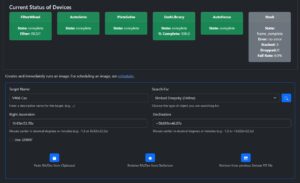
Switching to Functions -> Live shows the enhanced stacked image and details of the current stack.
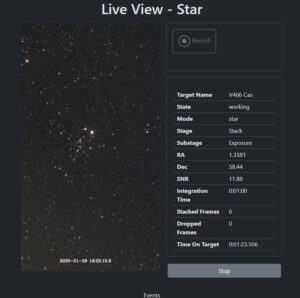
The Owl Cluster is one of my favorite open star clusters.
Next it was over to M 81. M 81, Bode’s Galaxy, a grand design spiral galaxy in the constellation of Ursa Major. Pretty much the same process. I am only using the Image function tonight, I’ll explore the scheduler another night. I selected M 81 in Stellarium and retrieved the coordinates. Set the acquisition time to 15m (15 minutes) and hit submit. Then changed to Functions -> Live in the SSC.
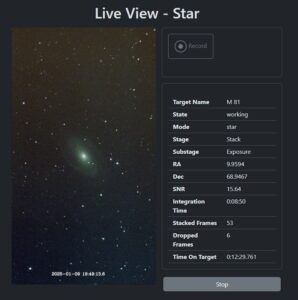
Something to note, the acquisition time includes both stacked and discarded frames. If you set up for 10 minutes of captures that is 60 x 10 second frames – good or bad.
Next it was on to M 1, the Crab Nebula, a supernova remnant in the constellation of Taurus. I set the acquisition time for this one to 30m (30 minutes).
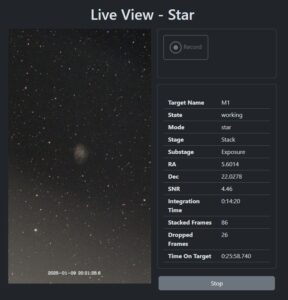
The SSC live view displays current state, the current integration time, frames stacked, frames dropped, and the time on target.
The final target of the night was NGC 2174, the Monkey Head Nebula, an emission nebula in the constellation of Orion. The only difference with this image capture is I enabled the Light Pollution filter. After submitting the Image job I switched over to the Live View.
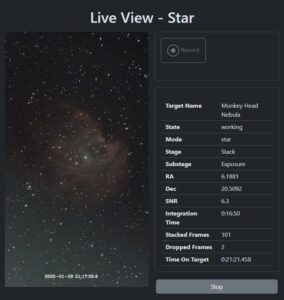
SeeStar images of each of the target capture tonight. No post processing, the images are exactly as saved during the SeeStar live stack.
NGC 457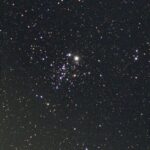 The Owl Cluster 33 x 10 seconds |
Messier 81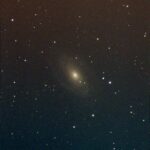 Bode’s Galaxy 65 x 10 seconds |
Messier 1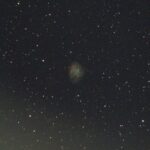 The Crab Nebula 183 x 10 seconds |
NGC 2174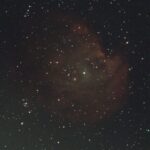 Monkey Head Nebula 154 x 10 seconds |
I called it a night kind of early, right around 10 PM, since it is a school night. A nice night enjoying some views through the SeeStar while getting familiar with the Simple SeeStar Controller (SSC) from SeeStar Alp.
Clear skies…

